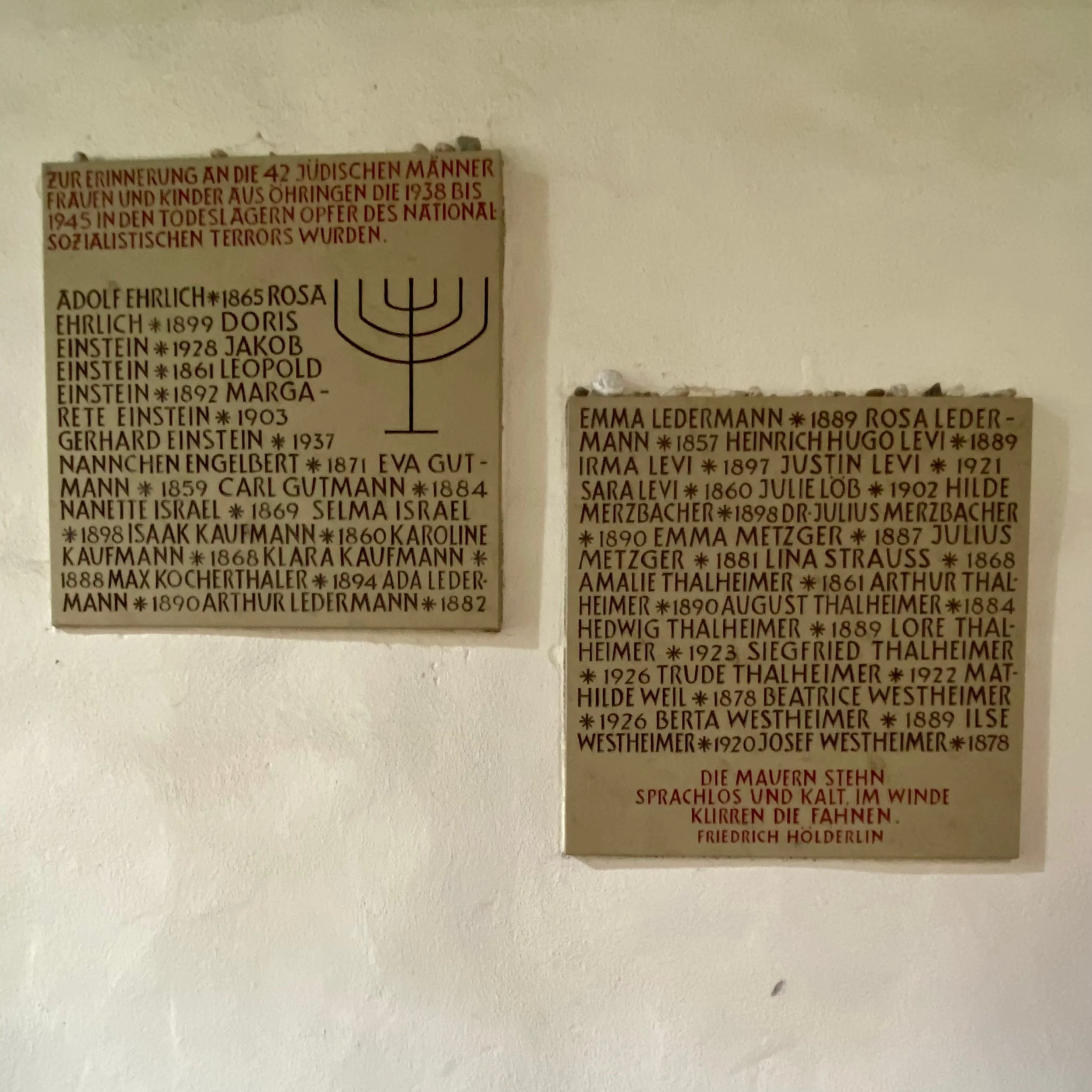Day Out: Öhringen
Little towns have a lot of history and I wanted to spend a day exploring something local. In the state Baden-Württemberg in Germany where I live, there is a region called Hohenlohe that is knowns as “Swabian Tuscany” for it’s rolling hills and natural beauty. I’m a fan. It’s truly so beautiful everywhere you look and full of history going way, way back.
Öhringen was once the capital of this area, home to royalty, a major trade route for the Romans and used to be surrounded by robbers. I contacted the small, local tourism office something I am learning I can do anywhere) and asked if they ever did group guided tours of the city. They sent me details and I reserved a time, and then asked a bunch of new friends if they would want to go. It ended up being a fun day out together and I am so glad we went.
We not only saw the old buildings, church, castle and gardens but we also learned all about them which made it so much more special.
While I wouldn’t say this is a major tourist stop for someone coming through Germany, I think it’s so valuable to know that there is always a lot to explore right where you live — no matter where you live. I know I appreciate an area more when I learn the human stories behind the buildings, traditions and events. It helps me to feel more attached to a place.
Just picture my Honda minivan rounding the corner here because this is where GPS led me to find parking 😬.
So, Öhringen! Here are some of the amazing things about this town —
When the Romans laid claim on this area, it was known as Vicus Aurelianus, named after the Roman Emperor Marcus Aurelius (who you may recognize as the emperor of the movie “Gladiator”). A vicus was a marketplace that was also a residential area. Major trade routes predating Roman times intersected right in Öhringen so the Romans wanted to secure this location for control. It was the Romans who introduced grapes to this whole region which has remained to this day in vineyards and world-famous wines.
Later on, in 1037, Adelaide of Metz who was a French noble woman married to a Speyer royal and mother of the Holy Roman Emperor Conrad II, founded the collegiate church in Öhringen as well as an endowment for the monks and education to continue there. Relics of the broom stick that was reported to have been used in beating Jesus before he was crucified, as well as stones from his tomb were brought to Öhringen which brought pilgrims and prosperity to the town. She had the wall built surrounding the city and obtained market rights which was good for the safety of the town but required a lot of taxes. Because it became a destination for pilgrims, robbers lined the routes and filled the forests. In fact, during the 16th and 17th centuries anywhere outside of the cities was considered completely lawless and very dangerous. Cities were the safe places to be. It wasn’t until the House of Hohenlohe put their foot down and started decapitating robbers that some order was restored.
Once the castle, these are all city offices now.
The old church interior was destroyed during the reformation but some medieval elements remain. Adelaide is buried in the crypt with a few other nobles.
These are replicas of the medieval era lion statues that guarded this door to the church. Lions were placed to scare away evil spirits so they could not enter the church.
Here’s a close up! Carved into the stone to the left shows two different “standard” measurements that guided all buying and selling in the area. The top one was the standard from another town, and the bottom one was the standard in Öhringen.
These are the original lions. They are now stored in the crypt for preservation. You can tell that whomever carved these lions had probably never seen a lion before!
The crypt had 3 different rooms — two with families of nobles of the area. There is a child’s tomb in this main room as well as the tomb of Adelaide.
Tomb of a child who died at age 3.
Tomb of Adelheide.
This church is much different after the iconoclasm. You can see evidence of brightly colored paintings on the pillars when you’re close to them. The memorials above and near the alter were fascinating.
This is the original altar piece that was spared from damage during the Reformation.
This memorial was in the cloister. It shows the names of every Jewish person from Öhringen that was taken during WWII to concentration camps.
This gate was designed by the same architect and builder who did the Brandenburg gate in Berlin.
We walked the alleyways listening to the stories took in all the old, old buildings that are just part of everyday life now before grabbing a quick lunch at the town square bakery and heading home in time for our kids to all get home from school. This was a fun day out and I am looking forward to finding another gem to explore with friends.


























